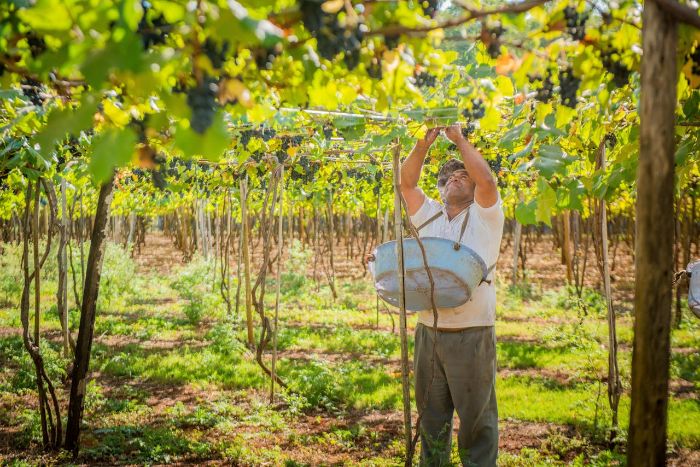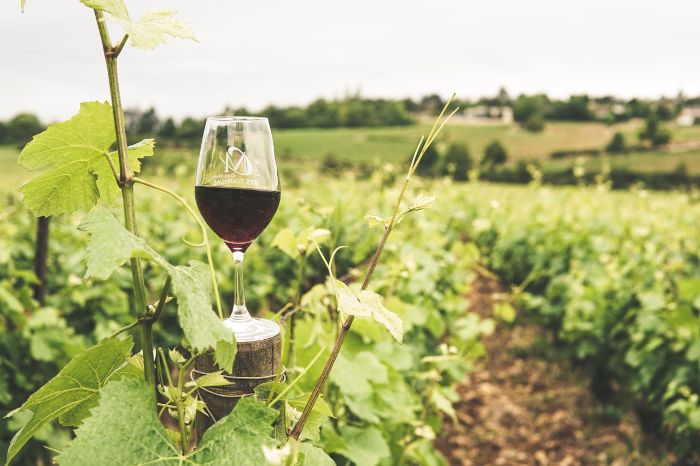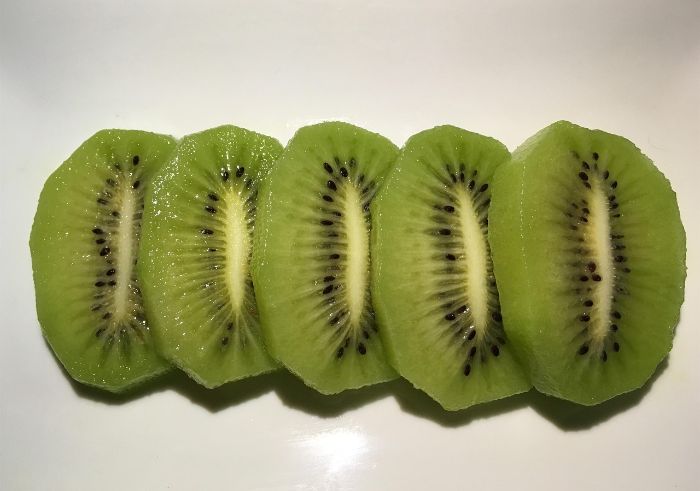Do you love gardening but have a small backyard? Maybe you live in a city with just a balcony. If so, dwarf fruit trees are your answer. They are very popular with gardeners for a reason. Let’s learn about these small trees and how they bring big flavor and fruit in small spaces.
Key Takeaways:
- Dwarf fruit trees are a great choice for small gardens and limited spaces.
- They offer the same delicious fruits as their larger counterparts, but with a compact size.
- Dwarf fruit trees are created through grafting and the use of specific rootstocks.
- By choosing dwarf fruit trees, you can maximize space and still enjoy a bountiful harvest.
- Stay tuned as we explore the benefits of growing dwarf fruit trees and share tips on selecting and caring for these wonderful plants.
Table of Contents
Introduction to Dwarf Fruit Trees
We’re diving into the world of dwarf fruit trees, perfect for tiny gardens. These trees are small yet bear lots of fruit. They are changing the game for people with not much space. We’ll talk about why they’re so well-liked and how they turn small gardens into fruitful spots.
Benefits of Growing Dwarf Fruit Trees in Small Gardens
Dwarf fruit trees are a great fit for small gardens. One big plus is their tiny size, perfect for spaces like patios and balconies. Unlike big fruit trees, dwarfs only grow to 6 to 8 feet tall. This makes taking care of them and picking the fruit much easier.
Even though they are small, dwarf fruit trees really pump out the fruit. You can expect lots of apples, oranges, or peaches every year. They turn your yard into a fruit lover’s paradise.
Overview of What Makes a Fruit Tree ‘Dwarf’
What makes a fruit tree “dwarf”? It’s a mix of special growing methods and picking the right roots. Grafting joins the fruitful part with a small-rooted base. Choosing this base controls the tree’s growth.
The roots can also affect things like fighting disease, dealing with different soils, and handling the weather. This way, your dwarf fruit tree is tailored to your garden’s needs.
This special way of growing trees lets you have a lot of fruit from a small space. So, whether you love apples, peaches, or cherries, there’s a dwarf tree that’s right for you.
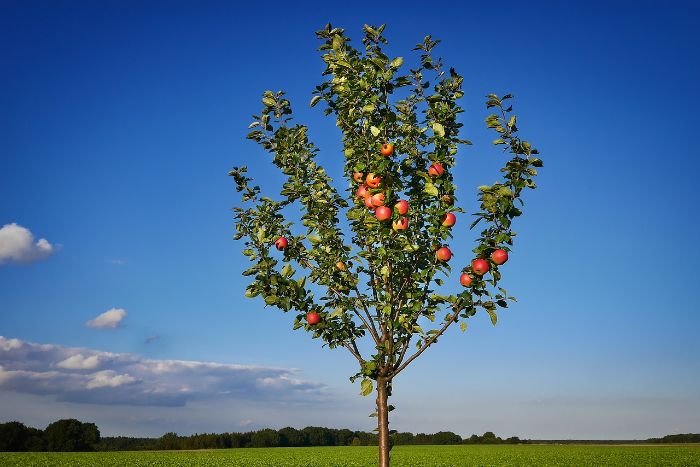
Popular Dwarf Fruit Tree Varieties
Top Dwarf Apple Trees for Small Gardens
Dwarf apple trees are very popular for small gardens. They are beautiful with their apple blossoms. Plus, they give you tasty fruit and don’t take up a lot of room. Some good choices for small gardens are:
- Honeycrisp – Known for its crisp texture and sweet-tart flavor, the Honeycrisp apple tree is a favorite among gardeners.
- Golden Delicious – This classic apple variety is adored for its golden color, sweet taste, and versatility in cooking and baking.
- Red Delicious – With its signature bright red skin and juicy, sweet flesh, the Red Delicious apple tree is a popular choice for fresh eating.
They not only make your garden look pretty but also give you lots of delicious apples to enjoy.
Best Dwarf Citrus Trees for Compact Spaces
Dwarf citrus trees remain a top option for compact spaces, and selecting citrus varieties that thrive in cooler climates ensures a reliable harvest. They let you have fresh citrus fruits like lemons, oranges, and limes. Some of the best for small spaces are:
- Meyer Lemon – The Meyer lemon tree is a compact citrus tree that produces sweet and fragrant lemons, perfect for adding zest to dishes and beverages.
- Calamondin Orange – Calamondin orange trees are small, ornamental citrus trees that produce small, tangy oranges that can be used for culinary purposes or as decoration.
- Kaffir Lime – Known for its unique double lobed leaves and aromatic zest, the Kaffir lime tree is a popular choice for those who enjoy Thai and Southeast Asian cuisine.
These citrus trees bring a taste of the tropics to your small garden. They are lovely for compact spaces.
Highly Productive Dwarf Stone Fruit Trees
Dwarf stone fruit trees are great for people who love sweet stone fruits. They give you lots of fruits without needing much space. Consider these options for a small area:
- Dwarf Cherry Trees – Varieties like the Bing cherry and Montmorency cherry are excellent choices for small gardens, offering a bountiful harvest of sweet and tart cherries.
- Dwarf Plum Trees – Compact plum trees like the Santa Rosa and Stanley plum are ideal for smaller spaces, producing a delicious array of plump, juicy plums.
- Dwarf Peach Trees – With their compact size and sweet, fragrant fruits, dwarf peach trees like the Elberta and Redhaven peach trees bring the taste of summer to any garden.
These trees give you the joy of cherries, plums, and peaches in your garden. They are perfect for small outdoor spaces.
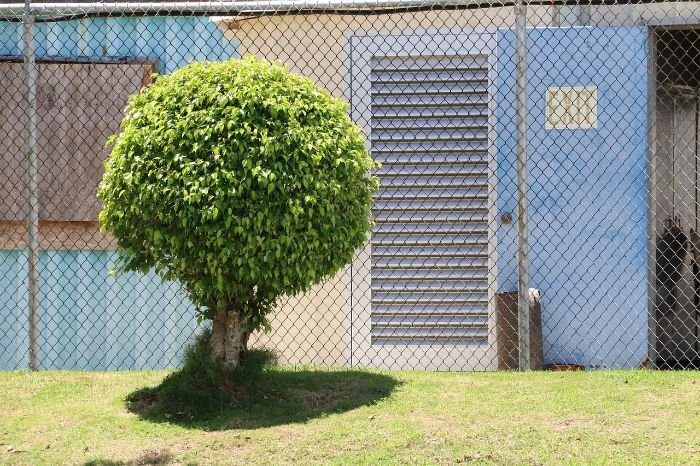
Selecting the Right Dwarf Fruit Tree for Your Garden
Choosing the best dwarf fruit tree for your garden involves several steps. Start by checking the size and features of your garden. Also, match the trees to your local climate and soil. This ensures they will grow well and bear fruit. Read on to learn how to pick the perfect dwarf tree for your garden.
Assessing Your Garden Space and Conditions
First, look at how much room you have. This includes both space on the ground and up in the air. Remember, dwarf trees are small and fit nicely in tiny gardens.
Check how much sunlight your garden gets. Most fruit trees need at least six hours of direct sun each day. Make sure your garden gets enough sun, especially during the fruit-bearing season.
Also, check your soil. Dwarf trees like soil that drains well and has lots of nutrients. Test your soil to gauge soil pH and nutrient levels, which helps in choosing the best dwarf tree variety for your garden conditions.
Matching Dwarf Trees to Your Climate and Soil Type
It’s important to choose trees that match your climate and soil. Trees have different needs for temperatures and soil conditions. So, pick ones that suit your area.
Consider the hardiness zone of your garden. This zone tells you the lowest temperature in your area. Choose trees that can handle your zone’s cold. Local garden experts can help you find the right trees for your area.
Also, consider soil types when matching dwarf fruit varieties to conditions like acidity or alkalinity. Research the soil preferences of tree varieties to find a match for your soil.
By making careful choices based on your garden’s conditions, you can set up the best home for a dwarf fruit tree. It will have everything it needs to grow and give you lots of tasty fruits.
Planting Dwarf Fruit Trees
Planting dwarf fruit trees well is key for their healthy growth. You can choose to plant them in pots or directly into the ground. It’s essential to use the right soil and planting methods for them to thrive.
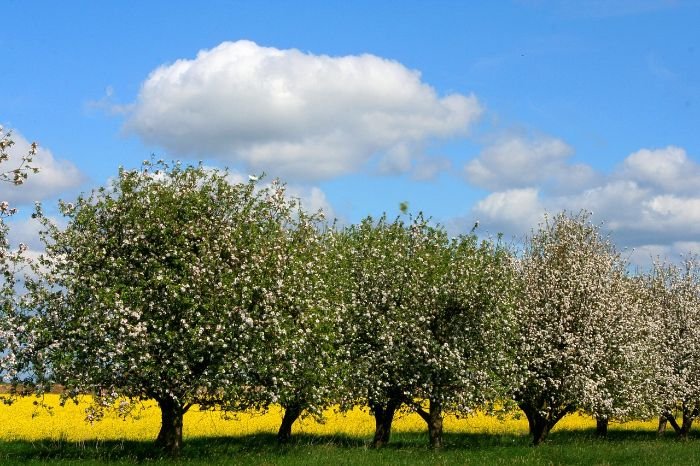
Best Practices for Planting in Pots vs. In-Ground
Think about your garden’s space when deciding where to plant. Putting dwarf fruit trees in pots means you can move them. Encourage good growth by choosing containers that offer adequate root space and proper drainage, ensuring your dwarf fruit trees stay healthy in confined areas.
Ground planting offers more stability and access to natural soil nutrients. Choose a sunny spot with proper drainage. Give each tree enough room to grow without being crowded by others.
Soil Preparation and Planting Techniques
Getting the soil right is crucial for dwarf fruit trees. First, clear the area of any weeds or debris. Make a wide, deep hole for the tree.
Loosen and add compost to the soil for better drainage and nutrients. Plant the tree with the root collar level with the ground. Fill the hole with soil, gently pressing to remove air. Water well to settle the soil and hydrate the tree.
Always check the soil’s dampness and water when needed, especially in dry times. Mulch the base of the tree to keep moisture in and the ground temperature steady. This keeps the roots healthy.
Following these steps will give dwarf fruit trees a great start. This will help them grow well and bear fruit.
Caring for Dwarf Fruit Trees
After planting your dwarf fruit trees, caring for them is key. You need to focus on two main things: giving them enough water and food, and shaping them through pruning and training.
Watering and Fertilizing Tips for Optimal Growth
For dwarf fruit trees to grow well, proper watering and feeding are a must. Here are some steps to help them get the right amount of moisture and nutrients:
- Water regularly – These trees need water often to keep the soil moist. Water deeply once or twice a week, especially when it’s hot. Be sure not to overwater, as this can hurt the roots.
- Check soil moisture – You can tell when they need water by checking the soil yourself. If it’s dry a few inches down, water them.
- Use mulch – Mulching helps the soil stay moist, stops weeds, and keeps the ground at a good temperature. Use organic mulch like wood chips or straw. Just don’t let it touch the tree trunk to avoid damage.
- Fertilize right – Dwarf fruit trees have unique needs when it comes to food. Use a balanced fruit tree fertilizer as the seasons change, following the product’s directions. Early spring and early summer are usually good times.
- Look for nutrient issues – Watch for signs of not enough nutrients, like yellow leaves or slow growth. Respond by adjusting when and how much you fertilize or by adding the right supplements.
Pruning and Training Dwarf Fruit Trees for Productivity
Keeping your trees the right size and shape means more fruit. It’s important to prune and train them well. Here’s how:
- Prune in the winter – Prune your trees when they’re not growing too much, so late winter or early spring. This cuts back the risk of diseases and helps them grow strong.
- Cut off bad branches – Get rid of branches that are dead, sick, or hurt. Always cut just beyond the base of the branch, where it meets the tree.
- Thin out how it’s crowded – Remove branches that are too close or that rub against each other. This helps air and light get in.
- Shape the tree – Cut the tree’s branches so it grows how you want it to. A good shape gets light to all the tree’s parts.
- Reduce the fruit load – Stop branches from breaking by taking off some of the fruit. Keep the best fruits, and the tree will be healthier.
- Spread the branches – To let the light in, help branches grow out instead of up. You can gently tie them to a support to move them.
By doing the right things for water, food, and care, your dwarf fruit trees will grow and fruit well.
Managing Pests and Diseases
Common Pests Affecting Dwarf Fruit Trees
Dwarf fruit trees can get pests even though they are small. It’s important to know about these pests. This way, we can deal with them well.
Aphids and fruit flies are the top pests for these trees. Aphids are tiny bugs that suck on tree sap, hurting the leaves. Fruit flies frequently invade ripening fruit by depositing eggs inside, but natural pest control strategies can help safeguard dwarf trees without harsh chemicals.
Looking over your trees often can stop these pests from doing much harm. You should use the right ways to get rid of aphids and fruit flies. This keeps your trees healthy and making lots of fruit.
Organic and Chemical Control Methods
You can pick between natural and chemical ways to keep pests away. Make your choice based on what is best for your trees.
Natural ways include using bugs like ladybugs to eat bad bugs. You can also use safe sprays to stop pests and protect the trees.
Chemical ways use strong sprays to kill pests. These work fast but you must be very careful. These sprays should not hurt the environment or people.
Think about how bad the problem is and if using chemicals is okay for you. It’s important to use a safe mix of methods. This way, we can protect our plants without hurting the environment.
Harvesting and Using Your Fruit
When and How to Harvest Dwarf Tree Fruits
Harvesting your fruit at the right time is key for great taste and quality. It’s important to know when each type of dwarf tree fruit should be picked. Generally, let fruits ripe on the tree before you pick them. Watch for signs that the fruit is ripe.
To pick apples and pears, try lifting them. If they come off the tree easily, they’re ready. The fruit should be colorful and the right size. For citrus, it should feel firm and its peel should be bright. It should also smell good. If squeezing stone fruit like peaches and plums makes them give a little, they’re ripe.
When picking, avoid hurting the fruit or tree. Cut the fruit off with pruning shears or sharp scissors, keeping a short stem on. Put the fruit in a soft-lined basket to stop bruising.
Creative Recipes and Preservation Tips
After picking your fruit, there are many tasty things you can make. Enjoy cooking with fresh dwarf tree fruits in many fun ways.
Bake apples and pears into sweet treats or have them with cheese. Citrus fruit makes yummy drinks, salads, or sorbets. Use stone fruits for tasty spreads, or try grilling them.
If you have a lot of fruit, think about making it last. You can preserve by canning, freezing, or drying. Canned and frozen fruits let you enjoy them all year. Dried fruits are healthy snacks.
Get creative and use preserving to keep enjoying your fruits. Do this, and you can enjoy your dwarf tree fruits for a long time.
Conclusion – Maximizing Your Small Garden Space
Dwarf fruit trees are small, but they offer big benefits for tiny gardens. If you pick, plant, and care for them right, you can get lots of fruit. This is true even if your garden space is small.
Choosing the right trees is important. Think about your garden size, the weather, and the soil. This will help your trees grow well. You will find many great options for dwarf apple, citrus, and stone fruit trees.
After planting, caring for your trees is key. Water and feed them well for the best results. Also, prune them to keep their size and shape right. And keep pests away to ensure your trees stay healthy.
Your hard work will pay off when you pick your fruit. Knowing the best time to harvest is key. Use fun recipes to enjoy your fruit all year. Dwarf trees can make your garden a lovely place full of fresh fruit.
FAQ
Why should I choose dwarf fruit trees for my small garden?
Dwarf fruit trees are perfect for small gardens. They are small but produce lots of fruit. This means you use less space for a big harvest.
What makes a fruit tree “dwarf”?
What makes a fruit tree “dwarf” is it’s grafted to a special rootstock. This process limits its growth. Thus, you get a smaller, tidy tree for your small garden.
What are some popular varieties of dwarf fruit trees?
Popular dwarf fruit trees are Honeycrisp and Golden Delicious apples. Others include Meyer lemon and Calamondin orange trees. Also, there are dwarf cherry and plum trees.
How do I select the right dwarf fruit tree for my garden?
To pick the right tree, think about your garden’s size and sunlight. Also, consider the type of soil you have. Choose a tree that fits your climate and soil for the best results.
What are the best practices for planting dwarf fruit trees?
When planting, decide if you’ll use pots or plant directly in the ground. Pick the correct size of pot and make sure it drains well. Also, prepare the soil properly for planting.
How do I care for dwarf fruit trees?
To care for them, water and fertilize them correctly. Trim and train them the right way to keep them small. This helps them grow well.
Why should I maximize my small garden space with dwarf fruit trees?
Using dwarf fruit trees lets you grow fresh fruit in tight spots. It’s a great way to get more from your garden. Plus, you get to enjoy your own fruits.








